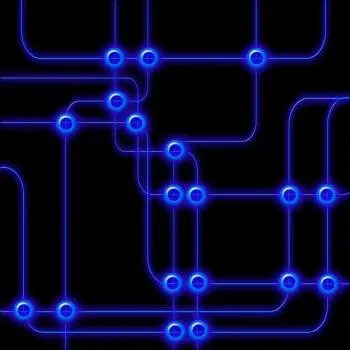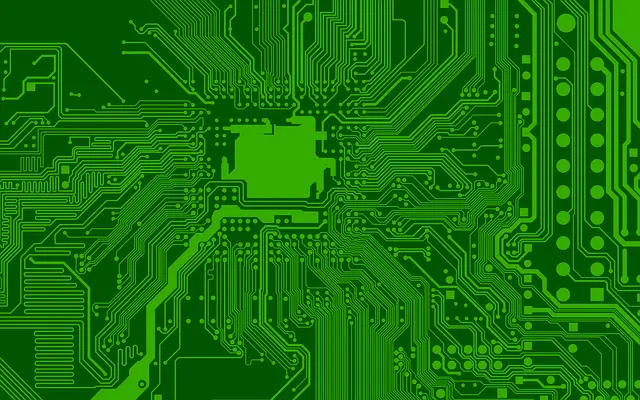
Electricity and electronics are two fundamental concepts in the world of technology and electrical engineering, but they are often confused due to their similarity in name and inherent relationship. However, these two disciplines are distinct in terms of their applications, components, and underlying principles.
In this article, we will explain in detail the differences between electricity and electronics to clarify their respective roles and functions in the modern world.
First of all, let's define both concepts:
What is electricity?
Electricity is defined as the form of energy that results from the interaction of charged particles, such as electrons and protons. This form of energy can manifest itself in various forms, such as electric current, static charge, electric fields, and magnetic fields.
Electricity has applications in a wide variety of fields, from electrical power generation and distribution to lighting, heating and cooling. Most electrical devices and systems use electrical principles for their operation, making electricity an essential part of modern life.
Electricity Basics
-
Electrical charge: Electrons, with a negative charge, are the carriers of electricity in most systems.
-
Electric current: Electric current refers to the flow of electrons through a conductor. It is measured in amperes (A) and is represented as the movement of charge over time.
-
Electrical tension: Electrical tension, or voltage, is the force that drives electrons to move in a circuit. It is measured in volts (V).
-
Resistance: Electrical resistance is the opposition to the flow of current in a circuit. It is measured in ohms (Ω).
-
Electrical power: Electrical power is the amount of electrical energy transferred per unit of time. It is measured in watts (W).
What is electronics?
 Electronics, on the other hand, is a specialized branch of electrical engineering that focuses on the control and manipulation of electrons to perform specific tasks.
Electronics, on the other hand, is a specialized branch of electrical engineering that focuses on the control and manipulation of electrons to perform specific tasks.
Unlike electricity, which deals with the generation and flow of electrical energy in general, electronics focuses on the manipulation of electrical signals to achieve precise goals.
Electronics are the basis for a wide range of modern devices and technologies, including computers, smartphones, televisions, navigation systems, communication systems and automatic control systems.
Basics of electronics
-
Electronic Components: Electronics use a variety of specific components, such as transistors, diodes, resistors, capacitors, inductors, and integrated circuits, to control and amplify electrical signals.
-
Electronic signals: In electronics, electrical signals are the carriers of information. These signals can be analog or digital, and their manipulation is essential for the operation of electronic devices.
-
Electronic circuits: Electronic circuits are specific configurations of components designed to perform particular tasks, such as amplifying signals, switching current, or processing information.
-
Amplification and processing: Electronics focuses on the amplification and processing of electrical signals to perform tasks such as motor control, data transmission, audio playback, and video display.
Differences Between Electricity and Electronics
Although both electricity and electronics are related to electrical energy, there are fundamental differences between both disciplines that must be clearly understood:
-
Scope of application: Electricity is a broader and more general concept that covers all aspects of electrical energy, from generation to distribution and consumption. Electronics, on the other hand, focuses on the design and manipulation of electronic devices and circuits to perform specific tasks.
-
Components used: Electricity is based on electrical components such as cables, switches and transformers, while electronics uses more advanced electronic components such as transistors and integrated circuits.
-
Signals and control: Electricity is not concerned with specific signals or precise control of electrons, while electronics focuses on signal processing and controlling electron flows to achieve specific goals.
The differences in an example: solar energy
Electricity and electronics play a fundamental role in the generation and utilization of solar energy.
The role each of these concepts plays in detail is described below:
Electricity in solar energy
Energy generation
Photovoltaic systems convert solar radiation into electricity. Photovoltaic solar panels contain solar cells that convert sunlight into electricity.
Solar cells take advantage of the photovoltaic effect to cause a movement of electrons and generate a continuous electric current when sunlight falls on them.
Driving and distribution
The electricity generated by solar panels must be conducted and distributed efficiently. Cables and electrical distribution systems are used to carry electricity from photovoltaic panels to the location where it will be used, such as homes, businesses, or the power grid.
Power inverters
Inverters are essential devices in solar systems that convert direct current (DC) produced by solar panels into alternating current (AC), which is the form of electricity used in most electrical devices and networks.
Electronics in solar energy
Control and monitoring
Solar energy systems use electronics to control and monitor the operation of solar panels and other components. This includes solar tracking systems that orient the panels towards the sun to maximize energy harvesting.
Energy storage
In some cases, solar energy is stored in batteries using advanced electronics.
Efficiency optimization
Electronics are also used to optimize the efficiency of solar systems. This can include monitoring systems, charge controllers for batteries, and power converters that ensure solar panels are operating at their optimal point.
Advanced investors
In addition to direct to alternating current conversion, modern solar inverters often incorporate advanced electronics to ensure optimal system performance.
Additionally, they can include functions such as fault detection, synchronization with the electrical grid and power management.